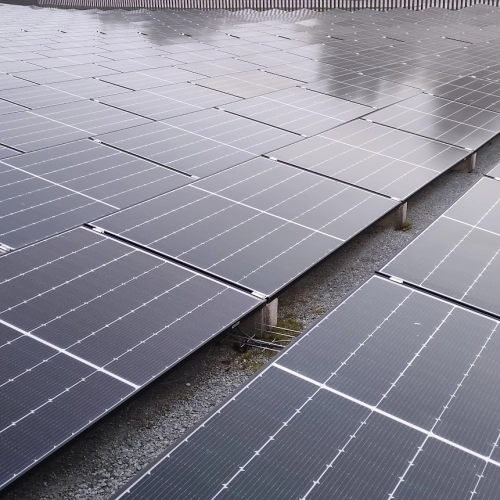
Kinetic energy and potential energy are two fundamental types of energy that interact in objects. The sum of these two forms of energy is called mechanical energy. If no energy is lost to the external environment, the mechanical energy of a system remains constant. The unit of measurement for energy in the International System of Units (SI) is the joule (J).
These energies can be converted into other forms, such as thermal, electrical, or sound energy. However, the study of the interaction between kinetic and potential energy is essential for the analysis of the motion of bodies.
What is kinetic energy?
Kinetic energy is the energy associated with the motion of a body. In physical terms, it is equivalent to the work required to accelerate an object from rest to its current velocity. The greater the velocity and mass of the object, the greater its kinetic energy.
Kinetic energy can be calculated using the following formula:
Where:
-
(\E_c \)is the kinetic energy (J);
-
\(m\)is the mass of the object (kg);
-
\(v\) is the speed of the object (m/s).
What is potential energy?
Potential energy is the energy stored in a body due to its position or configuration. This type of energy can be converted into other forms, such as kinetic energy. The most common types of potential energy are:
-
Gravitational potential energy : related to the height of an object in a gravitational field. Calculated by the formula:
\[E_p = mgh\]Where m is the mass (kg), g is the acceleration of gravity (9.8 m/s²) and h is the height (m).
-
Elastic potential energy : stored in deformed springs or rubber bands.
Difference between kinetic energy and potential energy
The main difference between kinetic energy and potential energy is in their origin:
- Kinetic energy is linked to motion : a stationary body has no kinetic energy. It increases as the object's speed increases.
- Potential energy is linked to the position or configuration of the object : an object raised to a certain height has potential energy that can be converted into kinetic energy when it falls.
Furthermore, kinetic energy is always positive, as it depends on the square of the velocity, while potential energy can be positive or negative, depending on the reference system used. Another important difference is that potential energy can be stored and used later, while kinetic energy is always associated with the immediate motion of the body.
In many physical systems, there is a constant conversion between these two types of energy. For example, in a swinging pendulum, the maximum potential energy occurs at the extremes of the motion, while the kinetic energy is greatest at the lowest point of the trajectory. This principle is widely studied in physics and is applied in various areas of engineering and technology.
Is solar energy potential or kinetic?
 Solar energy is primarily considered kinetic energy because it comes from the movement of photons emitted by the sun. These photons travel as electromagnetic radiation and can be converted into electricity (via solar panels) or heat (via solar thermal systems).
Solar energy is primarily considered kinetic energy because it comes from the movement of photons emitted by the sun. These photons travel as electromagnetic radiation and can be converted into electricity (via solar panels) or heat (via solar thermal systems).
However, solar energy can also be stored as potential energy in certain cases, such as:
- Batteries: Solar panels generate electricity, which is stored chemically in batteries for later use.
- Pumped Hydro Storage: Solar energy powers pumps that move water to a higher elevation, storing gravitational potential energy.
- Thermal Storage: Some solar systems store heat in materials like molten salt, keeping the energy for later release.
So, while solar energy itself is kinetic (radiation in motion), it can be transformed into potential energy through storage methods.
Examples of kinetic energy and potential energy
Below are some examples of how these forms of energy are converted into each other:
- Roller coaster : At its highest point, the car has maximum potential energy and almost zero kinetic energy. As it descends, the potential energy is converted into kinetic energy, increasing its speed.
- Waterfall in a dam : Water stored in a reservoir has gravitational potential energy. As it falls, this energy is converted into kinetic energy, which can be used to generate electricity in turbines.
- Trampoline jumping : An athlete at the top of the trampoline has maximum potential energy. As they jump, this energy is gradually converted into kinetic energy.
- A compressed spring has elastic potential energy. When released, this energy is converted into kinetic energy, causing the spring to expand.